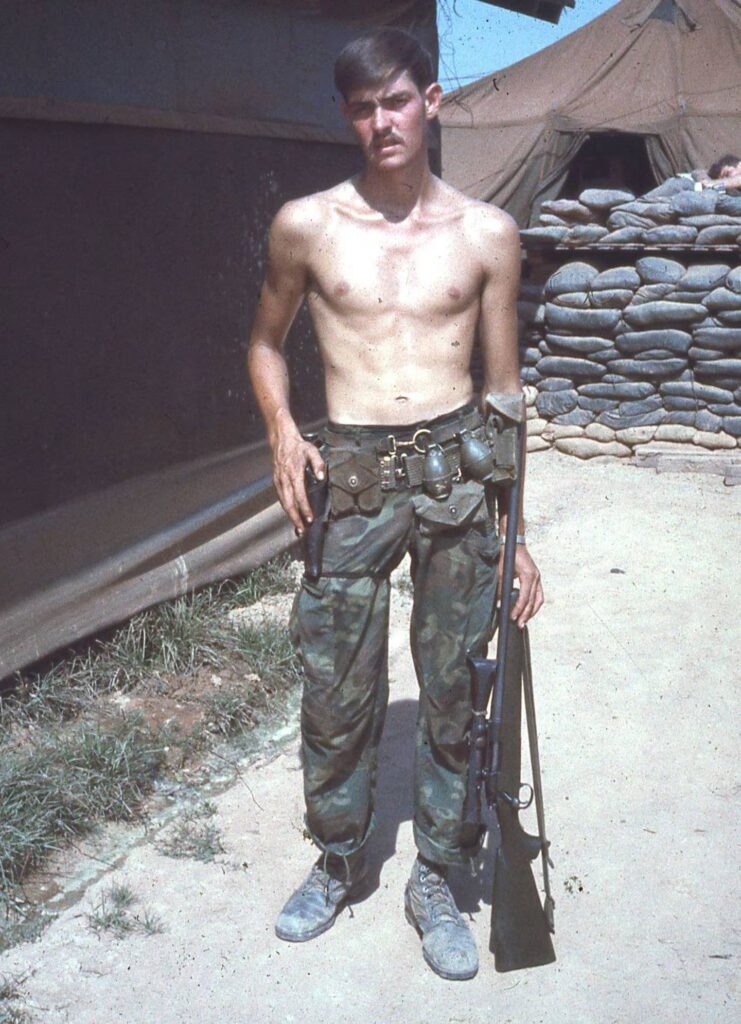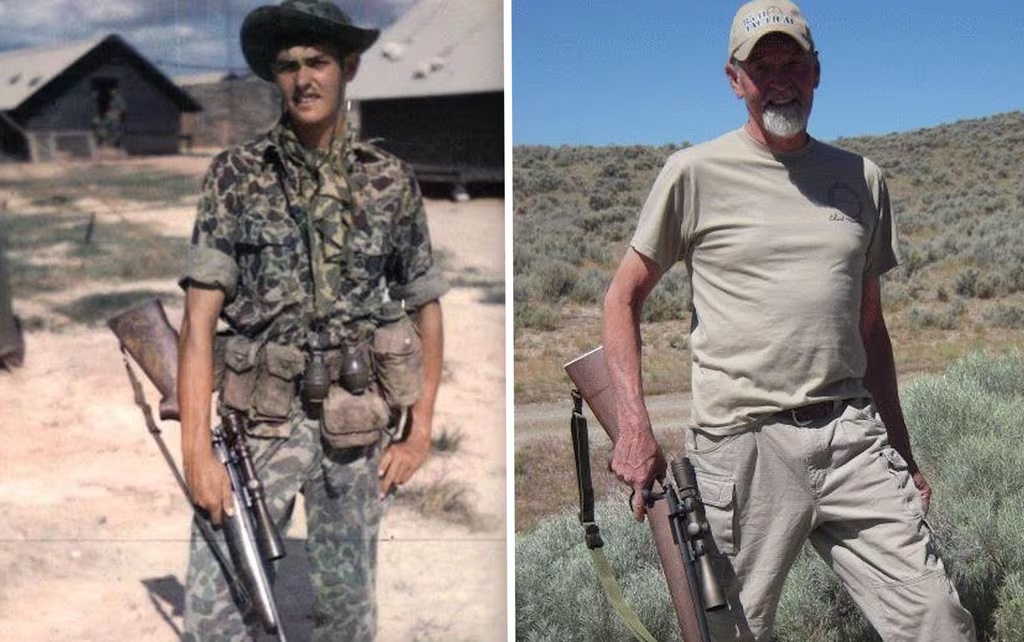Ask any Marine about the service’s greatest snipers, and a flurry of references to the legendary Gunnery Sgt. Carlos Hathcock are sure to flood the conversation. Yet it was another sniper, Charles “Chuck” Mawhinney, who quietly surpassed Hathcock as the Marine Corps’ deadliest.
The Lakeview, Oregon, native recorded 103 confirmed kills in Vietnam over the span of 16 months in 1968 and 1969. By the time he returned home, he’d also been credited with another 216 “probable kills,” a classification for incidents in which the act of confirming a kill in an active war zone would jeopardize safety.
Mawhinney, whose prowess with a Remington M40 sniper rifle in Vietnam remained largely a secret until a chance mention in an obscure 1991 book, died Feb. 12 at his home in Baker City, Oregon. He was 75.
Though Sgt. Mawhinney’s deadeye shooting has cemented his place in the pantheon of great Marines, he almost never became one.
The hunter from backwoods Oregon first had designs on joining the Navy, but opted against it after a Marine recruiter promised that he could delay his enlistment until after deer hunting season.
Mawhinney signed on the dotted line.
Among the rigorous Marine training that ensued, few of the exercises came more naturally than marksmanship. It was Mawhinney’s father, who’d served in the Marine Corps during World War II, who taught his son how to use a rifle as soon as Chuck was old enough to hunt.
That upbringing paid dividends. Mawhinney eventually deployed to Vietnam and quickly adapted to life amid tumultuous combat in the wake of the Tet Offensive.

“It was the ultimate hunting trip: a man hunting another man who was hunting me,” Mawhinney told the Los Angeles Times in 2000. “Don’t talk to me about hunting lions or elephants; they don’t fight back with rifles and scopes. I just loved it.”
Marines serving with Mawhinney lauded the Oregonian’s mastery of stalking the enemy. Concealed, he and his spotter would remain motionless, sometimes for hours at a time, tracking enemy movements from the thick brush of the Vietnam jungle.
“You get to the point where you start living like an animal. You act like an animal, you work like an animal, you are an animal. All you think about is killing,” he told the Times. “When you fire, your senses start going into overtime: eyes, ears, smell, everything. Your vision widens out so you see everything, and you can smell things like you can’t at other times. My rules of engagement were simple: If they had a weapon, they were going down.”
The number of enemies dispatched by Mawhinney swiftly climbed. Over the course of a single day near the An Hoa base outside Da Nang, Mawhinney registered 16 headshots.
He was a lethal titan among his Marines. But beyond those in his uniformed inner circle, very few — not even his closest friends back home — knew anything about his exploits in Vietnam. That all changed when Joseph Ward, a friend of Mawhinney’s who’d spent time as his spotter downrange, published a book in 1991 that briefly mentioned his friend’s surgical precision.
After more than two decades in the shadows, the Marine Corps’ deadliest — and most anonymous — sniper was suddenly thrust into the public eye. Yet his exposure did not come without its own controversy. In his book, Ward listed Mawhinney’s confirmed kill count as 101, a number that aggravated record-keepers who insisted Hathcock’s 93 confirmed kills were tops in the service.
The uncertainty of Ward’s claims led to the investigation of Marine Corps records that, by then, were nearly 25 years old.
Unearthed evidence confirmed the number of kills claimed by Ward was indeed incorrect: It was two shy of the real number.
Mawhinney gradually informed friends and family of his story following the circulation of his military record. Each recipient was equally flummoxed that their unassuming neighbor had, seemingly in another life, etched his name into the annals of U.S. military history.
“Chuck was one in a million,” Jim Lindsay, a longtime friend of Mawhinney, told the Baker City Herald this week. “Never one to gloat or brag about anything. … He was the kind of guy that you’d want to be around. But he didn’t try hard to be that. He’d listen to anybody else’s stories before telling his own.”
After much convincing, Chuck eventually acquiesced and told his full story to Lindsay, who, upon learning about Mawhinney’s skill with a rifle, wanted to author a book on his friend.“The Sniper: The Untold Story of the Marine Corps’ Greatest Marksman of All Time” was released in March 2023.
Mawhinney spent 27 years working with the U.S. Forest Service after leaving the Marine Corps. He leaves behind his wife, Robin, and three sons, Dennis, Cody and Don.
Asked in 2000 about his status as one of the deadliest Marines in the service’s history, Mawhinney told the Los Angeles Times it was never prompted by any lust for combat.
Saving his Marines meant accomplishing the mission. And if killing one enemy could diminish the fighting spirit of 10 other combatants who watched him crumple to the ground, then Mawhinney was doing his job.
He just happened to be damned good at it.
Originally published by Military Times, our sister publication.





